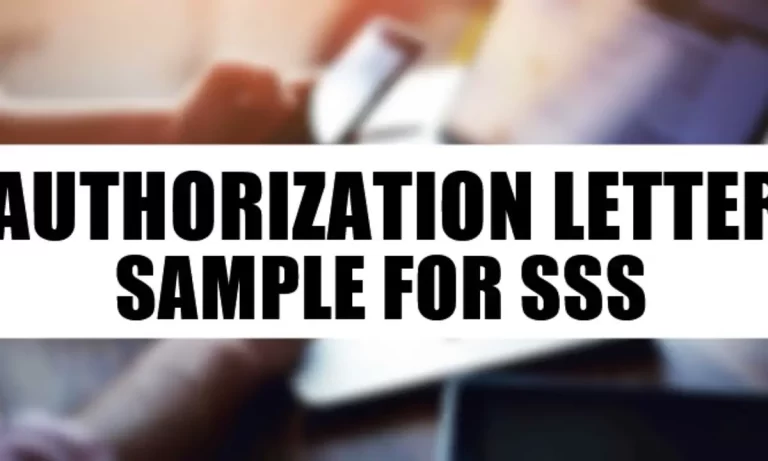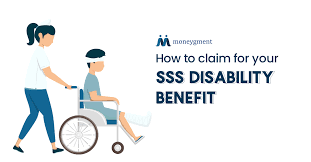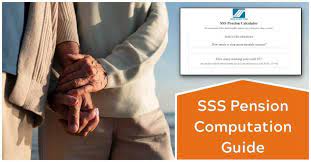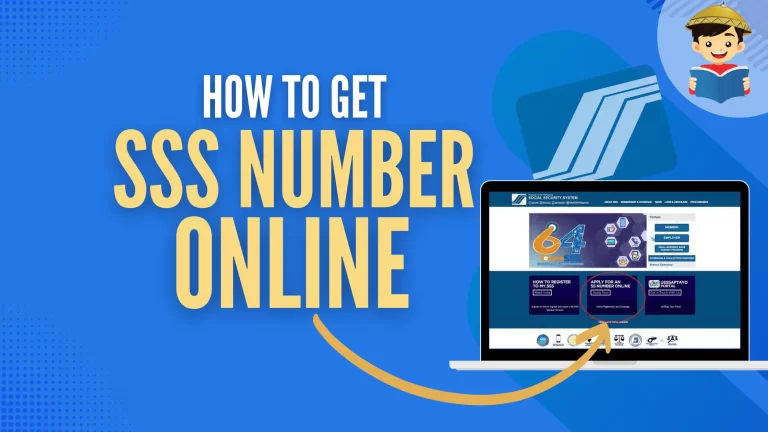How to Qualify, Apply for SSS Maternity Benefit?
The most commonly asked question in SSS inquiries is how to qualify, apply for, and calculate the SSS Maternity Benefit. We have previously provided a guide on how to apply for the benefit, but we have realized that our guide does not cover most of the common questions asked by our SSS Inquiries readers, especially those who are voluntary members.
How to Qualify, and Apply for SSS Maternity Benefit?
Therefore, we have created an ultimate guide on how to qualify, apply for, and calculate the SSS Maternity Benefit. This guide will also provide information on how to determine your Semester of Contingency, the application process and requirements, and how to calculate the amount you will receive.
- indicates required
- Email Address
- First Name
How to Apply and Qualify for SSS Maternity Benefit
- Frequently Asked Questions about SSS Maternity Benefit
- How to Know How Much your SSS Maternity Benefit
- Common reasons why your SSS Maternity Benefit is denied
- Affidavit of Undertaking Template
- How to Comply with Disbursement Account Enrollment Module?
- How to Submit SSS Maternity Application (MAT2) on SSS Website for Self Employed, Voluntary, OFW, Non-Working Spouses and Separated from Employers?
- How to File for SSS Maternity Reimbursement for Regular and Household Employers?
What is SSS Maternity Benefit
The SSS Maternity Benefit is a monetary assistance provided on a daily basis by the Social Security System (SSS) to female members who are unable to work due to childbirth or miscarriage. This benefit can be availed by a female SSS member for up to four (4) instances of delivery or miscarriage.
Question: My husband is paying as an SSS Member. Me (a housewife) is not an SSS member. Can my husband apply for an SSS Maternity Benefit for me?
Answer.”No, you need to be a member of SSS and have made the necessary contributions to be eligible for SSS Maternity Benefit. You can register as a Non-Working Housewife or as Self-Employed and make regular payments towards your SSS contribution to qualify for the benefit when you become pregnant.”
Question 2: I wasnt’t able to apply for SSS Maternity Benefit when I gave to birth to my child. Now he is 7 years old, can I still apply?
Answer:The application for SSS Maternity Benefit can be processed even when the child reaches 10 years of age. It is recommended to visit the nearest SSS Branch to inquire and submit the necessary documents as soon as possible.”
Question 3: I am bearing my fifth child, but I haven’t claimed yet an SSS Maternity Benefit in my first four children. Can I still apply for an SSS Benefit?
Answer: No, only the first four pregnancies are eligible for claiming the SSS Maternity Benefit, even if you haven’t claimed it for your previous pregnancies.
Question 4: I am already pregnant. Can I pay for my SSS to qualify for a maternity benefit?
Answer: The eligibility for SSS maternity benefit depends on your contribution. If you are pregnant and can pay the previous quarter immediately after finding out, you may still qualify. It’s important to read the guidelines on how to determine your eligibility for SSS maternity benefit.
How to Know if I am Eligible for SSS Maternity Benefit?
To qualify for the SSS Maternity Benefit, you must have made a minimum of three monthly contributions within the twelve months immediately preceding your Semester of Delivery/Contingency (which includes childbirth or miscarriage).
Common Misconceptions on the Eligibility of SSS Maternity Benefit
Many people believe that they only need to contribute to the Social Security System (SSS) for at least 3 months before giving birth to qualify for maternity benefits, but this is incorrect. Simply having a contribution history with the SSS from prior years does not guarantee that you will be entitled to receive maternity benefits from the organization.
Understanding the requirements for qualifying for paid SSS monthly contributions can be challenging, especially for voluntary contributors. Therefore, let us provide clarification on how to meet the eligibility criteria for receiving an SSS Maternity benefit.
To know if you are qualified:
Identify your Delivery Month
You should consult with your doctor to determine your anticipated month of delivery. Alternatively, you can calculate it yourself by adding 9 months to the date of your conception. For example, if your Expected Delivery Month is December 2018, we will use this as our reference point.
Identify the Quarter of your Delivery Month
To determine the quarter in which your expected delivery month falls, you should first identify the expected delivery month. Once you know the expected delivery month, you can use a table of quarters observed by the SSS to determine the corresponding quarter. The SSS observes four quarters, with each quarter covering a range of months. For example, if your expected delivery month is December 2018, it falls within the fourth quarter of the year, which covers the months of October through December.
Identify the Semester of contingency.
After determining the quarter in which your expected delivery month falls, we can now determine the corresponding semester. A semester is composed of two consecutive quarters. To determine your delivery month’s semester, you need to add the quarter prior to your expected delivery month’s quarter.
Here are the corresponding semesters for each pair of consecutive quarters:
- Semester A: Quarters 1 and 2
- Semester B: Quarters 2 and 3
- Semester C: Quarters 3 and 4
- Semester D: Quarters 4 and 1
For example, if your expected delivery month is December 2018, which falls under the 4th quarter, the previous quarter would be the 3rd quarter (July 2018). Therefore, your contingency semester would be Semester C, which covers the 3rd and 4th quarters or July to December 2018.
Another example, if your expected delivery month is July 2018, which falls under the 3rd quarter, the previous quarter would be the 2nd quarter (April-June). Therefore, your contingency semester would be Semester B, which covers the 2nd and 3rd quarters or April to September 2018.
Check your Contributions posted if you have at least 3 months within 12 months prior to your Semester of contingency.
It is necessary for you to have made a minimum of 3 months’ contribution during the 12 months preceding your Semester of Contingency, now that you are aware of it.
For our Example No 1.
The expected Month of Delivery is December 2018.
The semester of Contingency is July-December 2018.12 Month Period prior to the Semester of Contingency: is July 2017-June 2018.
From July 2017-June to 2018, the SSS member should have at least 3 months contribution posted to qualify for the SSS Maternity Benefit.
For our Example No 2.
Expected Month of Delivery is July 2018.
The semester of Contingency is April-September 2018.
12-Month Period prior to Semester of Contingency:
To be eligible for the SSS Maternity Benefit from April 2017 to March 2018, a member must have contributed for at least 3 months during that period. If you’re unsure of your contribution status, you can check it online and make up for any missed payments by paying quarterly as a voluntary member or paying for the whole year if you’re an OFW member. The SSS Contributions Schedule and Deadline for payment can be found on this link. If you’re an employed member and your contributions are not fully posted, you can inquire about the status of your contribution remittance from your company’s payroll officer.
Now that you know if you are qualified or not, now, let us proceed on how to Apply for SSS Maternity Benefit.
How to Apply for SSS Maternity Benefit?
Step 1: Notify SSS of your Pregnancy
It’s important to complete Step 1 within 60 days of confirming your pregnancy. Make sure to keep the SSS-approved/acknowledged Maternity Notification document as it will be one of the required documents for Step 2 when filing for your SSS Maternity Reimbursement.
Here are three ways how to Notify SSS About your Pregnancy:
A. Thru your Employer (if Employed) or thru SSS Branch (if Voluntary Member)
Once you have confirmed your pregnancy through a pregnancy test kit or ultrasound, it is important to promptly inform your employer if you are employed, or directly notify the Social Security System (SSS) if you are a voluntary member.
To notify of your Pregnancy, you must submit the following documents with your estimated date of delivery:
- SSS Maternity Notification Form (downloadable form)
- Proof of Pregnancy (Ultrasound Result)
- UMID or any two valid IDs:
- both with signature
at least 1 with a photo and date of birth
You are required to submit the necessary documents to your employer or the Social Security System (SSS) within 60 days from the date of conception. If you are an employed member, you can submit these documents to your employer or through your HR officer, and your employer will inform the SSS about your pregnancy promptly.
B. Thru SSS Website
To submit your SSS Maternity Notification, you can do so online through the SSS website if you are registered for My.SSS. No additional documents are required for submission.
C. Thru Text Notification
You can notify your SSS Maternity thru Text Message following this format.
SSS REG <SS NUMBER> <DATE OF BIRTH> then send to 2600.
Example: SSS REG 031234567 01/01/80
SSS MATERNITYNOTIF at isend sa 2600.
The cost of sending a text message is P2.50 for Globe/Touch Mobile and Smart subscribers and P2.00 for Sun Cellular subscribers. After the SSS receives your text notification, you will receive a confirmation via text. It is important to keep your PIN for future SSS Text Service Transactions.
Here is the list of SSS Transactions that you can do in SSS Text Services
D. Thru SSS Self Service Information Terminals you can find in SSS Branch and some Malls.
No documentation is needed for Maternity Notification filed thru the SSS website, text, or SSIT.
Step 2: Application for Maternity Benefit Reimbursement
If you are employed, Step 2 should be completed prior to taking maternity leave. If you are self-employed or a voluntary member, Step 2 should be completed after you have given birth. For self-employed and voluntary members, the Maternity Benefit Reimbursement can be filed at any SSS branch that is convenient for the member. You have up to 10 years after giving birth to file your MAT2, but it is recommended to file your claim as soon as you have all the necessary documents.
A. For employed members
The employer will provide the full amount of maternity benefit to the eligible female employee within 30 days from the date of the maternity leave application. The Social Security System (SSS) will then reimburse the employer the entire amount of maternity benefit that was advanced to the female employee as soon as satisfactory proof of payment is received.
Requirements:
- Maternity Notification Form duly stamped and received by SSS
- Maternity Reimbursement Form
SSS UMID or any two (2) valid IDs, both with signature and at least one (1) with photo and date of birth B. For Self-Employed/Voluntary Members
The SSS pays the maternity benefit directly to eligible recipients through their preferred savings or current account, cash card, or prepaid account in a bank accredited by the SSS. This is done through the Sickness Maternity Benefit-Payment Thru the Bank program. In case the member does not have a bank account, the SSS will provide a Letter of Introduction (LOI) form. This form can be presented to an SSS-accredited bank of the member’s choice to open a single savings or cash card account.
Requirements:
- Maternity Notification Form duly stamped and received by SSS
- Maternity Reimbursement Form
- SSS UMID or any two (2) valid IDs, both with signature and at least one (1) with photo and date of birth
C. For Separated Members
Requirements:
Requirements:
The following documents are required for processing maternity benefits:
- Maternity Notification Form, which must be stamped and received by SSS
- Maternity Reimbursement Form
- SSS UMID or two (2) valid IDs, one with photo and date of birth, and both with signature
- Certification from the last employer indicating the effective date of separation from employment, or a notice of closure/strike, or a certification from the Department of Labor and Employment if there is a pending labor case involving the employee or employer
- Certification that no advance payment was granted if the requested confinement days fall within or before the date of separation.
Additional Requirements Depending on the Case of Maternity:
Normal delivery
- Submit the certified true or authenticated copy of the duly registered birth certificate with the Local Civil Registry. In case the child dies or is stillborn, duly registered death or fetal death certificate.
certified true or authenticated copy of
Cesarean delivery
- Submit the certified or authenticated copy duly registered with the Local Civil Registry
- Submit the certified true copy of the operating room record/surgical memorandum.
- Discharge Summary Report
- Medical/Clinical Abstract
- Delivery Report
- Detailed Invoice showing cesarean delivery charges, for deliveries abroad only
For Complete Miscarriage
A record of a person’s pregnancy history, verified by the attending physician who includes their professional medical license number, printed name, and signature. The record should include the number of pregnancies. Additionally, either an ultrasound report that confirms the pregnancy or a medical certificate from the attending physician detailing the circumstances of the pregnancy should be submitted.
For Incomplete Miscarriage
Please provide your complete pregnancy history, certified by your attending physician, including the number of pregnancies, their corresponding medical license number, printed name, and signature. Additionally, you may include any of the following supporting documents: certified copies of hospital or medical records, a Dilation & Curettage (D&C) report, a histopathological report, pregnancy test results before and after miscarriage, and an ultrasound report to provide proof of pregnancy.
For Ectopic Pregnancy
- Obstetrical History indicating the number of pregnancies/is duly certified by the attending physician with his/her Professional Medical License number with printed name and signature; and
- Any of the following:
- A certified true copy of hospital/medical record/s
- A certified true copy of ORR
- Histopathological report
- Pregnancy test before and after the miscarriage
When will I receive my SSS Maternity Benefit?
If you are an employed female, your employer is required to advance your full SSS Maternity Benefit within 30 days from the date of filing of your maternity leave application. Once your employer pays you, the SSS will reimburse them 100% of the amount paid, upon satisfactory proof of payment.
Employers must enroll in the “Sickness and Maternity Benefits Payment thru-the-Bank Program” (SMB-PTB) for this purpose. The reimbursement from SSS will be deposited directly to the employer’s existing savings/current account in an SSS-accredited bank. The payment details will be sent to the employer through their My.SSS account.
If you are a Self-Employed or Voluntary Member, the SSS will pay your maternity benefit directly to you through a single savings/current/cash card/prepaid account in an SSS-accredited bank under the SMB-PTB program. If you don’t have an existing bank account, the SSS will provide you with a Letter of Introduction (LOI) form, which you must present to an SSS-accredited bank to open a single savings or cash card account.
How much will my SSS Maternity Benefit Amount?
Your SSS Maternity benefit is calculated based on your Monthly Salary Credit (MSC) from your SSS contributions. The MSC is the basis for determining your contributions and benefits for the month and has a maximum amount of P16,000 starting January 1, 2014. The higher your MSC, the higher your SSS benefit will be.
To determine your MSC, let’s say you have a monthly salary of P20,000 and pay a monthly SSS contribution of P1,760. Your MSC will be P16,000, which is the maximum amount based on the Table of Contribution as of August 2018.
It’s important to note that even if you earn more than P15,750 per month, your MSC will remain at P16,000. On the other hand, the minimum MSC is P1,000 for members who declare a monthly income of P1,000 to P1,249.99 and pay the minimum SSS contribution of P110 per month.
Youtube Video on How to Know How much will be your SSS Maternity Benefit thru the SSS Website
One of the most frequently asked questions in SSS inquiries is how to qualify, apply for, and calculate the SSS Maternity Benefit. We previously published a guide on how to apply for the benefit, but we have noticed that many of our readers, particularly those who are voluntary members, still have a lot of common questions that were not addressed in the guide. Therefore, we are now creating a new guide to cover these frequently asked questions.
This is an all-inclusive guide that will provide information on how to qualify, apply for, and compute your SSS Maternity Benefit. The guide will also cover topics such as how to determine your Semester of Contingency, the necessary steps and requirements for applying, and how to calculate the amount of benefit you will receive.”
What is SSS Maternity Benefit?
The SSS Maternity Benefit is a daily monetary aid provided by the Social Security System (SSS) to a female member who is unable to work because of childbirth or miscarriage. The benefit can be availed up to four times for a female member’s first four deliveries or miscarriages.
Question: My husband is paying as an SSS Member. I (a housewife) is not an SSS member. Can my husband apply for an SSS Maternity Benefit for me?
Answer: To be eligible for the SSS Maternity Benefit, you must be a member of the Social Security System (SSS) and have made the required contributions. If you are not currently employed, you can register as a Non-Working Housewife or as Self-Employed and make regular SSS contributions to qualify for the benefit when you become pregnant.
Question 2: I wasn’t able to apply for SSS Maternity Benefit when I gave to birth to my child. Now he is 7 years old, can I still apply?
Answer: The application for the SSS Maternity Benefit can be done even if the child is already 10 years old. It is advised to visit the nearest SSS branch to inquire about the necessary requirements and submit the application.
Question 3: I am bearing my fifth child, but I haven’t claimed yet an SSS Maternity Benefit for my first four children. Can I still apply for an SSS Benefit?
Answer: “No, you can only claim the SSS Maternity Benefit for the first four pregnancies, even if you did not claim it for your previous pregnancies.”
Question 4: I am already pregnant. Can I pay for my SSS to qualify for a maternity benefit?
Answer: Whether or not you qualify for the SSS Maternity Benefit depends on your contribution. If you become pregnant and are able to pay the previous quarter immediately after finding out, you may still be eligible. It is important to carefully read and understand the guidelines on how to determine eligibility for the SSS Maternity Benefit.
So, how do you compute the SSS Maternity Benefit?
Generally, these are the steps when computing for the SSS Maternity Benefit:
- Identify your Semester of Contingency. Can you rephrase this sentence: “Remember the Semester of Contingency we mentioned in the early part of the article? Exclude the semester of contingency (delivery or miscarriage) by counting 12 months backward starting from the month prior to your semester of contingency.” in simpler terms? Sure! Do you mean you want me to simplify the sentence and make it easier to un
- Identify the six highest monthly salary credits within the 12-month periodTo determine your monthly salary credit, add up the six highest monthly credits. But if you only made 3, 4, or 5 contributions within the 12 months before your semester of contingency, add only the monthly credits from those months.
- To determine the average daily salary credit, you need to divide the total monthly salary credit by 180 days. Next, you can calculate the total amount of maternity benefit
- multiplying the daily maternity allowance with the number of days based on the specific condition (as outlined below).
- For Normal Deliver – 105 days
- For Cesarean Delivery – 105 days
- Abortion, Miscarriage – 60 days





